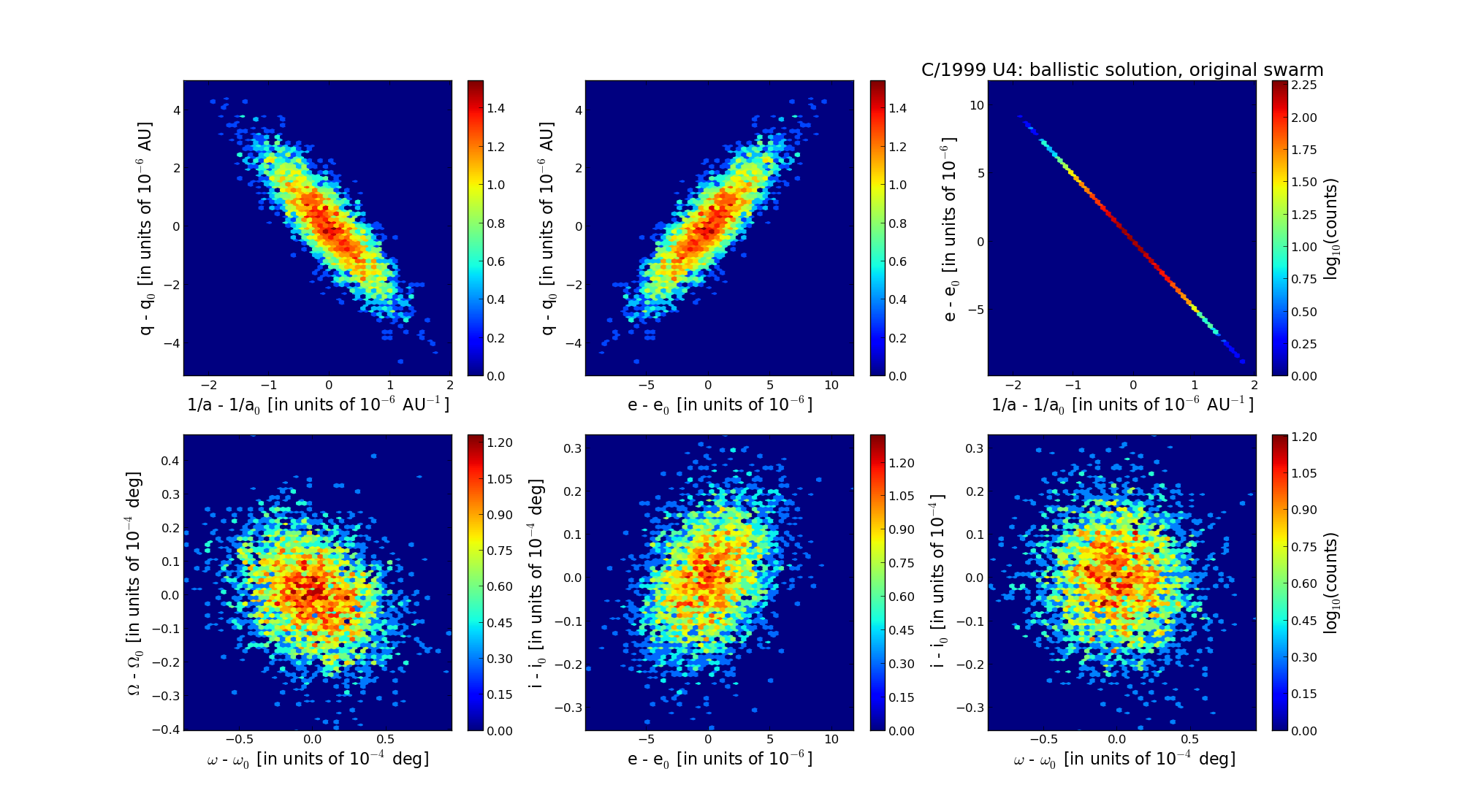| Solar System Dynamics & Planetology Group |
 |
C/1999 U4 Catalina-Skiff |  |
| Solar System Dynamics & Planetology Group |
 |
C/1999 U4 Catalina-Skiff |  |
| number of observations | 911 |
| number of residuals | 1807 |
| data interval | 1999 Sep. 18 — 2004 Apr. 11 |
| rms [arcsec] | 0.78 |
| orbit quality class | 1a+ |
| Epoch (TT) | 20011018.0 | = JD 2452200.5 |
| time of perihelion passage (TT) | 20011028.456827 | ± 0.000242 |
| perihelion distance | 4.91532891 | ± 0.00000132 |
| eccentricity | 1.00766217 | ± 0.00000263 |
| argument of perihelion [deg] | 77.511961 | ± 0.000024 |
| longitude of the ascending node [deg] | 32.288874 | ± 0.000011 |
| inclination [deg] | 51.926317 | ± 0.000009 |
| inverse semimajor axis [10-6 au-1] | -1558.83 | ± 0.53 |

| Epoch (TT) | 16960618 | |
| time of perihelion passage (TT) | 20011029.942046 | ± 0.000253 |
| perihelion distance | 4.88670740 | ± 0.00000124 |
| eccentricity | 0.99984462 | ± 0.00000257 |
| argument of perihelion [deg] | 77.829741 | ± 0.000025 |
| longitude of the ascending node [deg] | 32.387465 | ± 0.000011 |
| inclination [deg] | 52.060460 | ± 0.000010 |
| inverse semimajor axis [10-6 au-1] | 31.80 | ± 0.53 |
| Epoch (TT) | 23030529 | |
| time of perihelion passage (TT) | 20011026.980430 | ± 0.000244 |
| perihelion distance | 4.90968719 | ± 0.00000136 |
| eccentricity | 1.00143976 | ± 0.00000263 |
| argument of perihelion [deg] | 77.397331 | ± 0.000024 |
| longitude of the ascending node [deg] | 32.273045 | ± 0.000011 |
| inclination [deg] | 51.997123 | ± 0.000009 |
| inverse semimajor axis [10-6 au-1] | -293.25 | ± 0.54 |